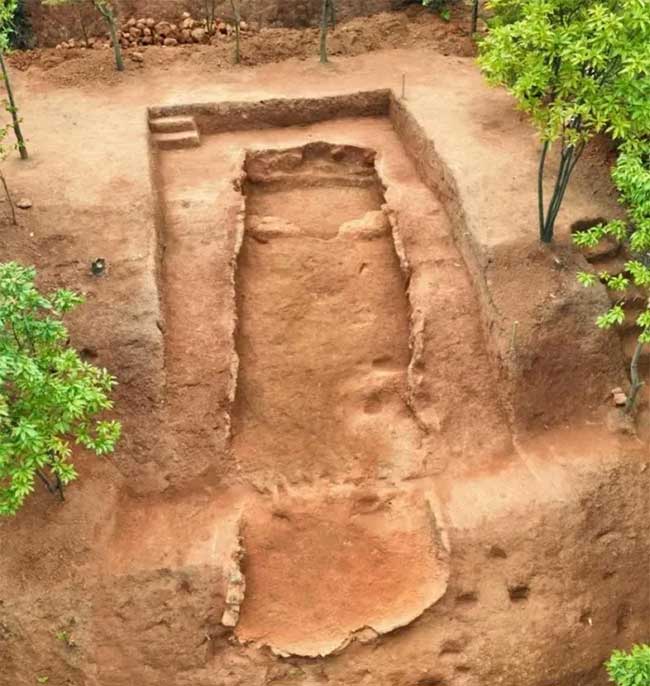This site was discovered in Yongxing village in Liling city in April when a group of archaeologists conducted a survey of the Lushui Basin.

Remains of a 1900-year-old celadon kiln.
The remains of the celadon kiln measure 7.2 meters in length and 2 to 2.15 meters in width. The roof of the kiln has collapsed, and inside, there is a large quantity of leftover bricks and tiles, including fragments of pottery and celadon. These ceramic pieces are hard, primarily gray in color, and are shaped like pots, kettles, boilers, and plates, among various other types.
Through comparative analysis, the archaeologists found that the ceramics excavated from the kiln resemble the common pottery found in tombs from the mid to late Eastern Han period in Eastern Hunan.
Liling has a long history of porcelain production. As early as the Eastern Han period, this city had a tradition of large-scale production of porcelain and stoneware for daily use. According to experts, this archaeological discovery has updated previous understandings of the history of porcelain making in Liling.
Mr. Wen Guoxun, Director of the Archaeology Department at the Zhuzhou City Museum, stated that the excavation provides new information for studying the historical development of the ceramics industry in Hunan and the technical advancements of the kiln industry in the middle reaches of the Yangtze River during this period.


















































